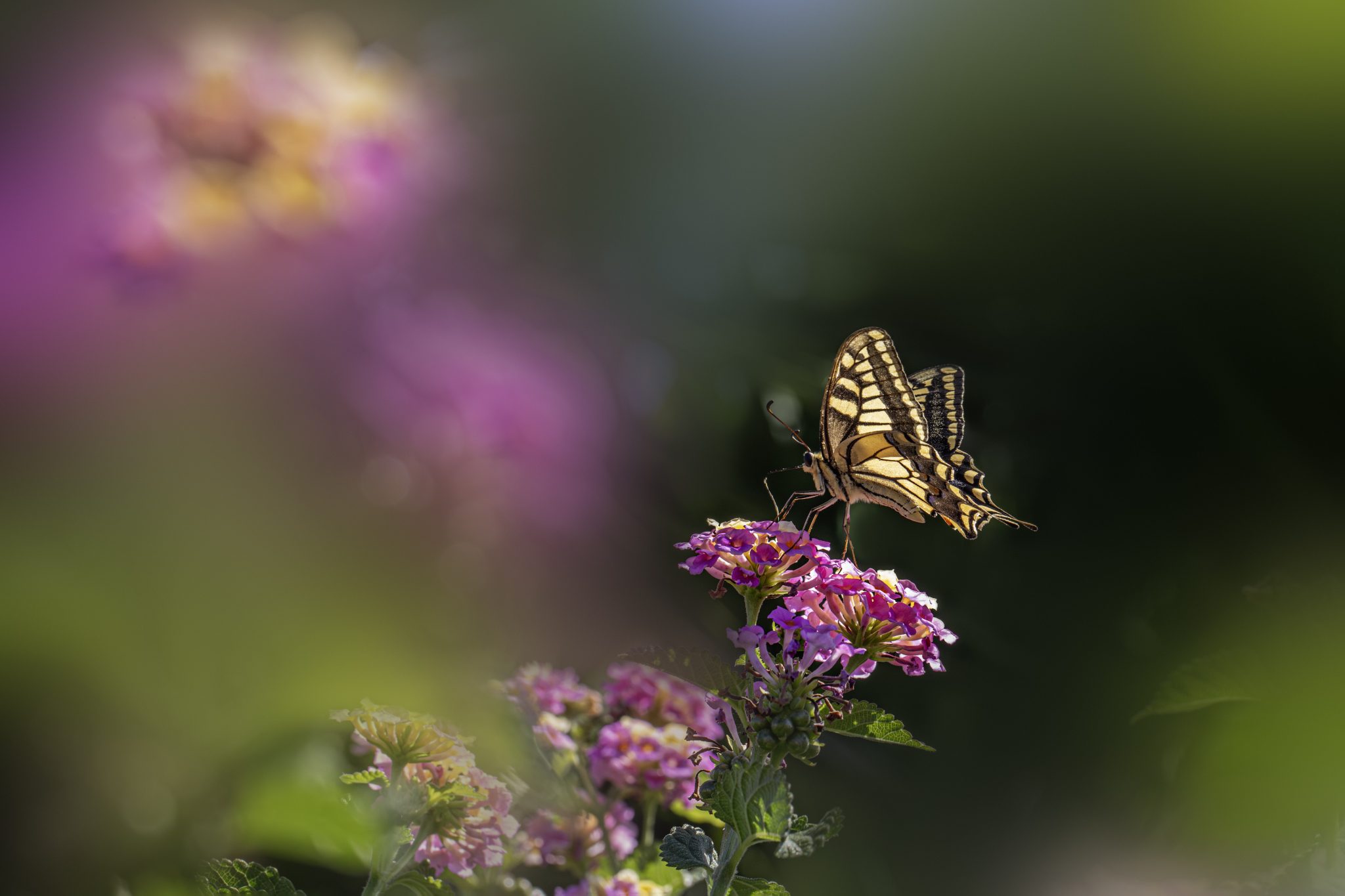Here’s a complete, detailed overview of the Old World Swallowtail (Papilio machaon) — one of Europe’s most iconic and widely recognized butterflies. 🦋
🦋 Old World Swallowtail (Papilio machaon)
Scientific name: Papilio machaon Linnaeus, 1758
Common names: Old World Swallowtail, Common Swallowtail
Family: Papilionidae
Genus: Papilio
🌍 General Overview
The Old World Swallowtail is a large, striking butterfly found throughout Europe, Asia, and North America. It is one of the most widespread swallowtails and is famous for its elegant tails, yellow-and-black coloration, and graceful flight.
It is a strong flier and can be seen gliding powerfully over open landscapes, flower-rich meadows, and mountain slopes.
🧬 Identification
| Feature | Description |
|---|---|
| Wingspan | 65–86 mm |
| Coloration | Bright yellow wings with bold black veins and borders |
| Hindwings | Each hindwing has a blue band and a red eye spot, ending in characteristic “swallow” tails |
| Underside | Paler with similar patterning; blue and red spots more subdued |
| Sexual dimorphism | Males and females are similar, though females are slightly larger and rounder-winged |
🐛 Life Cycle
| Stage | Description |
|---|---|
| Egg | Spherical, pale green turning yellowish, laid singly on host plants |
| Larva (Caterpillar) | Bright green with black bands and orange spots; emits an orange osmeterium (defensive gland) when threatened |
| Pupa (Chrysalis) | Brown or green, attached by a silk girdle to stems or fences |
| Adult butterfly | Emerges after a few weeks or after overwintering as a chrysalis |
- Generations per year:
1–3, depending on climate (usually two in temperate Europe).
🌿 Host Plants
The caterpillars primarily feed on Umbellifers (Apiaceae family), including:
- Foeniculum vulgare (fennel)
- Pastinaca sativa (wild parsnip)
- Daucus carota (wild carrot)
- Angelica sylvestris (wild angelica)
🌸 Adult Diet
Adults feed on nectar from a wide range of flowers, such as:
- Thymus (thyme)
- Centaurea (knapweed)
- Scabiosa (scabious)
- Valeriana (valerian)
🏞️ Habitat
- Preferred habitats:
Open meadows, grasslands, flowery hillsides, coastal dunes, valley slopes, and mountainous regions up to 2,000–2,500 m altitude. - Behavior:
Males are known for hilltopping — gathering at high points to wait for females.
Adults are strong fliers, often patrolling large areas in search of mates or flowers.
🌍 Distribution
- Found across Europe, North Africa, Asia, and North America (as Papilio machaon hudsonianus).
- In Europe, it is widespread but local in many regions, especially in the north and lowlands due to habitat loss.
🧭 Subspecies
Over 30 subspecies are recognized worldwide.
Some examples:
- P. m. britannicus – Endemic to the Norfolk Broads, England
- P. m. gorganus – Common in continental Europe
- P. m. hippocrates – Found in Japan
- P. m. orientis – Siberia and Central Asia
⚖️ Conservation Status
- IUCN Red List: Least Concern (LC)
- Threats: Habitat loss, agricultural intensification, and over-collection in some areas
- Protection:
Protected in parts of Europe (e.g., the UK, Finland, and several EU countries)
📊 Quick Facts
| Category | Details |
|---|---|
| Scientific name | Papilio machaon |
| Common name | Old World Swallowtail |
| Family | Papilionidae |
| Wingspan | 65–86 mm |
| Flight period | April–September (varies by region) |
| Generations | 1–3 per year |
| Host plants | Wild carrot, fennel, angelica, parsnip |
| Distribution | Europe, Asia, N. America, N. Africa |
| Status | Least Concern |
🪶 Interesting Notes
- The name “machaon” comes from Machaon, a healer from Greek mythology, son of Asclepius.
- The species has inspired art, stamps, and cultural symbols due to its beauty and elegance.
- Caterpillars are often confused with those of the scarce swallowtail (Iphiclides podalirius), but their host plants and markings differ.
Views: 189
Subscribe to the newsletter:
